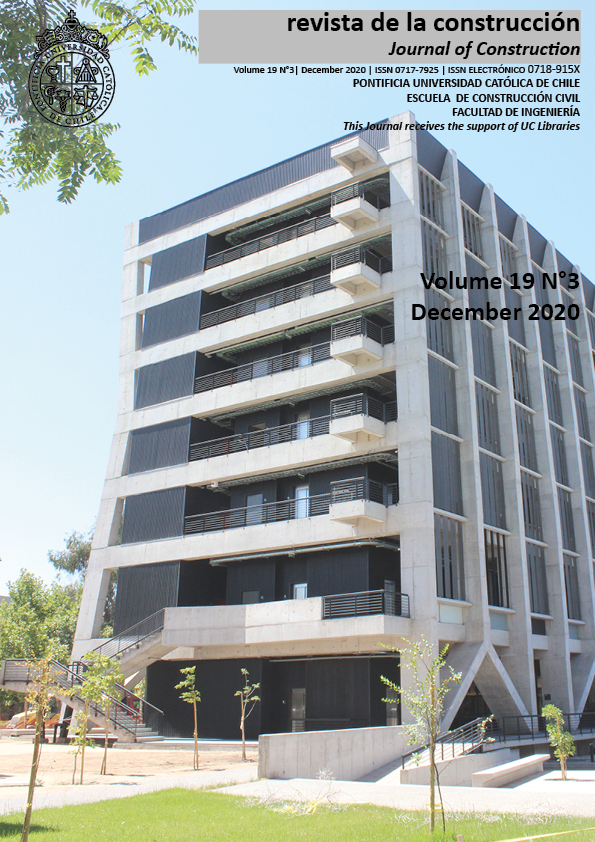Effects of plasticizer and antifreeze on concrete at elevated temperatures and different cooling regimes
DOI:
https://doi.org/10.7764/rdlc.19.3.347-357Keywords:
concrete, plasticizer, antifreeze, elevated temperature, cooling regimesAbstract
In recent years, chemical admixtures have become one of the main components of concrete alongside aggregate, cement and water. In this study, the plasticizer and the antifreeze were used. The concrete specimens (the reference concrete without an admixture, concrete with plasticizer, concrete with antifreeze and concrete with plasticizer+antifreeze) were exposed to elevated temperatures (200, 400, 550 and 700 ºC) and cooling via air and water. Water absorption, ultrasonic pulse velocity and compressive strength tests were performed on the specimens. The concrete specimens were also analyzed using X-ray diffraction. The test results indicated that at the temperatures of 550 and 700 ºC and against both of the cooling regimes the plasticizer+antifreeze concrete showed a maximum strength loss. When the air cooled specimens were examined, the lowest strength loss was this obtained for reference concrete at 550 and 700 ºC. The lowest strength loss at these temperatures for the water cooled specimens was observed in the concrete with antifreeze. After being exposed to 700 ºC and the cooling regimes, no portlandite peaks were observed in the concrete mixtures was when they were compared at with the control specimen exposed to 20 ºC in the X-ray diffraction analysis.





